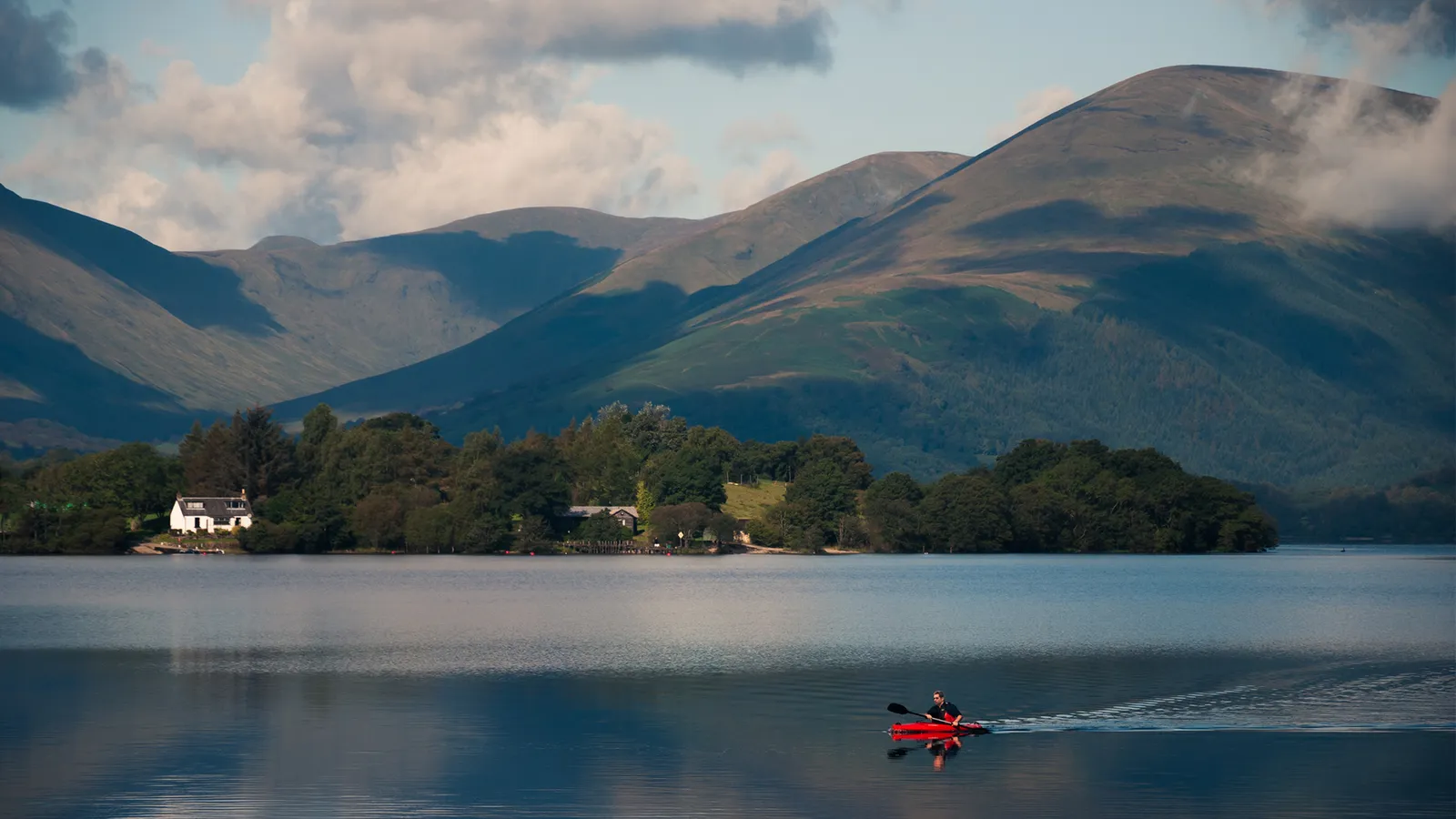Inchconnachan: The British island where wallabies rule

Once the rural retreat of a powerboat-racing countess, this uninhabited isle is now a slow-travel paradise that's home to Scotland's most exotic mammal.
There is no graceful way to exit a tiny inflatable vessel as it crashes against the shoreline in an unexpected seiche. With my rucksack dashed over one shoulder and one leg cocked over the dank bow, I clumsily hopped out and plonked my right boot straight into Loch Lomond’s bone-chilling water. My left boot soon followed, thudding into the swampy grass on the remote island of Inchconnachan, the former summertime playground of one Fiona Bryde Gore (née Colquhoun), Countess of Arran – and home to Scotland's only colony of wallabies.
After being enamoured by Inchconnachan for years, I had finally arrived on this uninhabited, 103-acre island in Loch Lomond & The Trossachs National Park; albeit in far less style than a certain Lady Arran would have done. A member of the famous Clan Colquhoun – that, under Luss Estates, still own several islands and a stretch of the mainland on the west of Loch Lomond – Fiona Colquhoun fell in love with this hidden oasis and ordered a timber-framed holiday home, boathouse and pier for her personal use. All three of these are now derelict; the latter explaining my clumsy entrance.
Colquhoun, born in 1918, grew up on the bonnie banks o’ Loch Lomond and loved exploring the islands surrounding her childhood home at Rossdhu, on the western shore of Loch Lomond. She often returned to Inchconnachan – meaning "The Colquhoun's Island" in Scottish Gaelic – over other nearby isles of Inchtavannach, Inchmoan and Inchcruin, due to its mid-loch location and secluded bays that made it ideal for powerboating.
After taking part in a powerboat speed trial aboard the racing boat Miss England III on Loch Lomond at the age of 13, Colquhoun's need for speed gathered pace. She would eventually earn the nickname "the fastest granny on water". And after becoming the first woman to travel faster than 100mph on water by hitting a blistering 103mph on Lake Windermere in 1980, she was awarded the esteemed Segrave Trophy, which is given to Britons demonstrating "outstanding skill, courage and initiative on land, water and in the air".
"From all accounts, [Lady Arran] was a quirky character," said Carron Tobin, the former executive director at Loch Lomond & The Trossachs National Park. Today, Inchconnachan remains something of a testament to the countess' quirks.
You may also be interested in:
• A country being unified through hiking
• The plan to connect every British town
• The birthplace of the US vacation
After marrying Sir Arthur Gore, the 8th Earl of Arran, in 1937, Colquhoun became the Countess of Arran. At their home in Hemel Hempstead, Hertfordshire, Gore's penchant for keeping non-native animals, such as llamas, alpacas and wallabies, was well-documented.
"I understand she introduced wallabies to the island shortly after World War Two, having kept them at her home in England," Tobin said. "I believe there are around 50 to 60 still living on the island today. Inchconnachan is also home to the capercaillie, an endangered Scottish woodland grouse. It is disputed, but they seem happy cohabiting with the wallabies."
Previous Story
- Internet unit of Elon Musk's SpaceX to enter...
- Ford invests up to £230m to make electric...
- BFC names recipients of its 2021/2022 BFC Foundation...
- Gymshark reportedly in talks over potential IPO
- Yolke switches to a direct-to-consumer model
- Boohoo switches auditing model
- Very Group appoints STJ Advisors to explore potential...
- Liberty of London full-year sales take lockdown hit,...